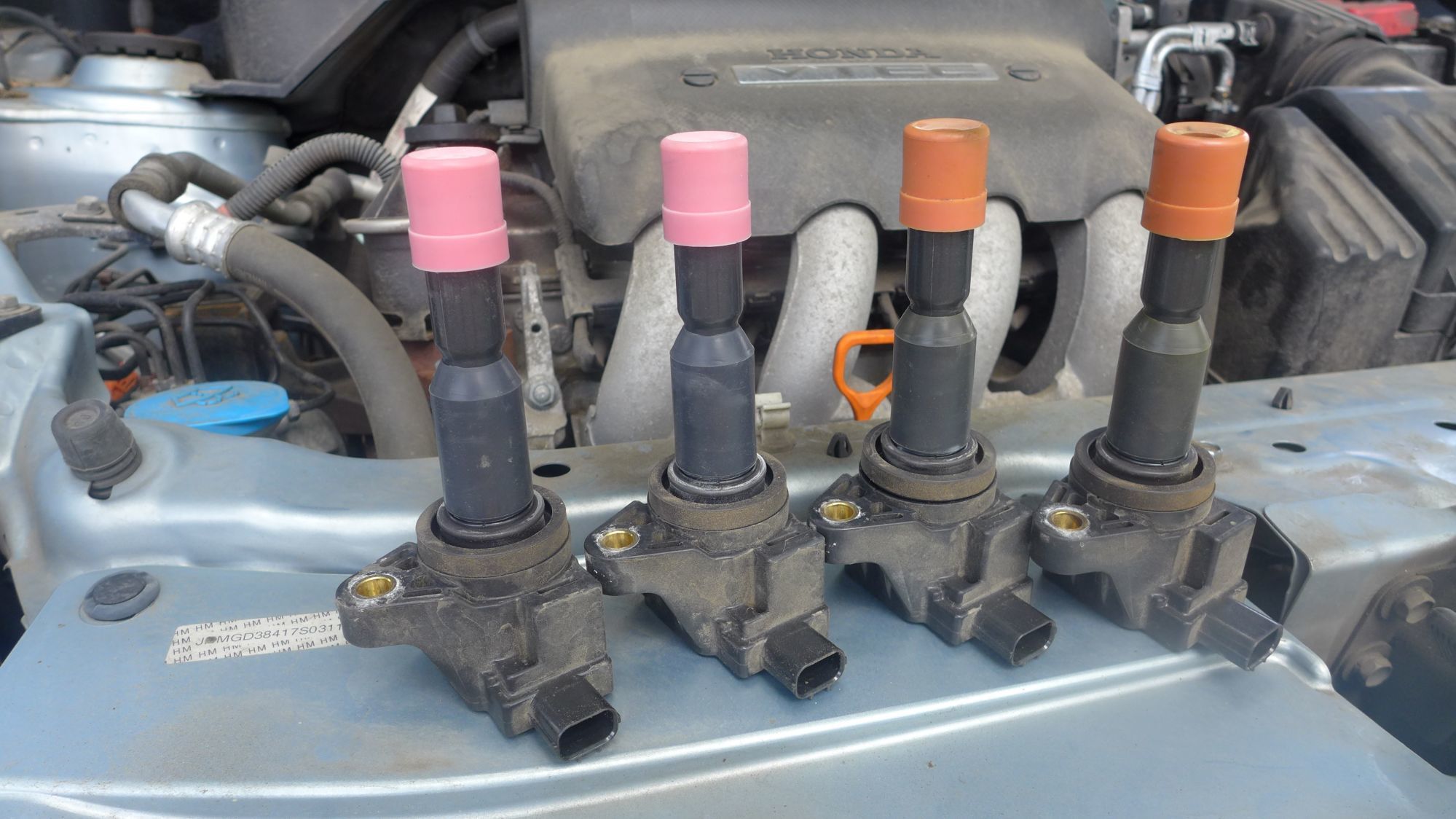Cleaning spark plug coils is essential for vehicle maintenance. Neglecting them can lead to poor performance.
Spark plug coils are vital components of your car’s ignition system. They ensure that your engine runs smoothly. Over time, dirt and grime can build up, causing misfires and reduced fuel efficiency. Cleaning these coils regularly can prevent costly repairs.
In this guide, you will learn step-by-step how to clean spark plug coils effectively. You don’t need to be a mechanic to follow these simple instructions. With a few tools and some patience, you can keep your engine running at its best. Ready to enhance your car’s performance? Let’s dive into the details of cleaning spark plug coils.

Credit: www.facebook.com
Tools And Materials Needed
A set of basic tools is required. A socket wrench is a must. Screwdrivers, both flat and Phillips, are essential. A spark plug socket is needed to remove the spark plugs. Pliers can be helpful for tight spots.
Contact cleaner is ideal for cleaning spark plug coils. A wire brush can help remove tough dirt. Use compressed air to blow away debris. Rubbing alcohol can be used for a thorough clean.
Preparation
Clean spark plug coils by disconnecting the battery and removing the coils. Use a soft brush to remove dirt. Spray a coil cleaner for thorough cleaning and let it dry before reinstalling.
Safety Precautions
Always wear gloves and safety glasses. Make sure the engine is off and cool. Disconnect the battery to avoid any shocks. Keep tools and materials ready. Use a well-ventilated space to avoid inhaling fumes.
Initial Inspection
Check the spark plug coils for dirt and damage. Look for cracks or signs of wear. Ensure connections are tight and clean. If a coil is damaged, replace it. Clean the area around the coils before removing them. Use a flashlight to see better.
Removing The Spark Plug Coils
Remove the spark plug coils by gently pulling them out from the engine. This step ensures easy access for cleaning.
Locating The Coils
The spark plug coils are usually on top of the engine. Look for a series of thick wires connected to them. These wires lead to each spark plug coil. Each cylinder has one coil. The coils are often secured with bolts.
Proper Removal Technique
Start by turning off the engine. Let it cool down. Use a wrench to remove the bolts. Gently pull out the coils one by one. Avoid pulling on the wires. This can cause damage. Inspect each coil for wear and tear.
Cleaning The Coils
Use compressed air to blow dust off the coils. Hold the air canister upright. Keep it a few inches from the coil. Spray in short bursts. This removes loose dirt and grime.
Choose a suitable cleaning solution. Spray the solution on a cloth. Wipe the coils gently. Avoid soaking the coils. Too much liquid can damage them. Let the coils dry completely before reinstalling.
Inspecting For Damage
Check spark plug coils for any signs of wear or damage. Look for cracks, corrosion, or burns. These issues can affect performance.
Checking For Cracks
First, ensure the engine is off and cool. Remove the spark plug coils carefully. Look closely at the coils. Check for any visible cracks or damage. Cracks can cause misfires or poor performance. Replace damaged coils for best results. Use a flashlight for better inspection.
Evaluating Electrical Connections
Next, inspect the electrical connections. Ensure they are clean and tight. Loose connections can cause problems. Use a multimeter to check for continuity. Replace any faulty wires or connectors. Clean the connections with contact cleaner if needed.

Credit: www.nomaallim.com
Reinstalling The Coils
Ensure each spark plug coil goes back to its original spot. Proper placement is crucial for the engine’s performance. Align the coils with their respective plugs carefully. Press them firmly to make sure they are seated well. Misaligned coils can cause engine misfire or poor performance.
Use the correct tools to secure the coils in place. Tighten the bolts to hold the coils firmly. Avoid over-tightening to prevent damage. Check each coil for a secure fit. This ensures they do not move during engine operation. A loose coil can lead to engine issues.
Testing The Engine
Turn the key in the ignition. Listen for any unusual sounds. The engine should start smoothly. If it struggles, there might be a problem with the spark plug coils. Observe the dashboard for any warning lights. These lights can help identify issues.
Keep the engine running for a few minutes. Check for any misfires or strange noises. Feel for any vibrations. These signs can indicate dirty spark plug coils. Pay attention to the car’s acceleration. It should be smooth and responsive. If the car feels sluggish, the coils might need cleaning.
Maintenance Tips
Clean spark plug coils regularly to ensure your engine runs smoothly. Use a soft brush to remove dirt and debris. Avoid using water to prevent electrical damage.
Regular Cleaning Schedule
Keep a regular schedule to clean spark plug coils. Clean them every 5,000 miles. Use a dry cloth or a soft brush. Remove any dirt or debris. A clean coil ensures better engine performance. Do not use water or liquids. Liquids can damage the coil. Keep the area around the coil dry. This prevents rust and corrosion.
Signs To Watch For
Look for signs of wear in spark plug coils. Misfiring engines are a common sign. Reduced fuel efficiency is another. Difficulty starting the car is also a sign. Check for cracks or damage on the coil. Replace the coil if you see any damage. Regular checks can prevent bigger issues.

Credit: www.fitfreak.net
Conclusion
Cleaning spark plug coils is essential for maintaining engine performance. It prevents misfires and ensures smooth running. Regular cleaning can extend the lifespan of your coils. Use the right tools and follow the steps carefully. It’s simple and saves money on repairs.
Keep your vehicle in top shape with proper maintenance. A little effort goes a long way. Happy driving!
